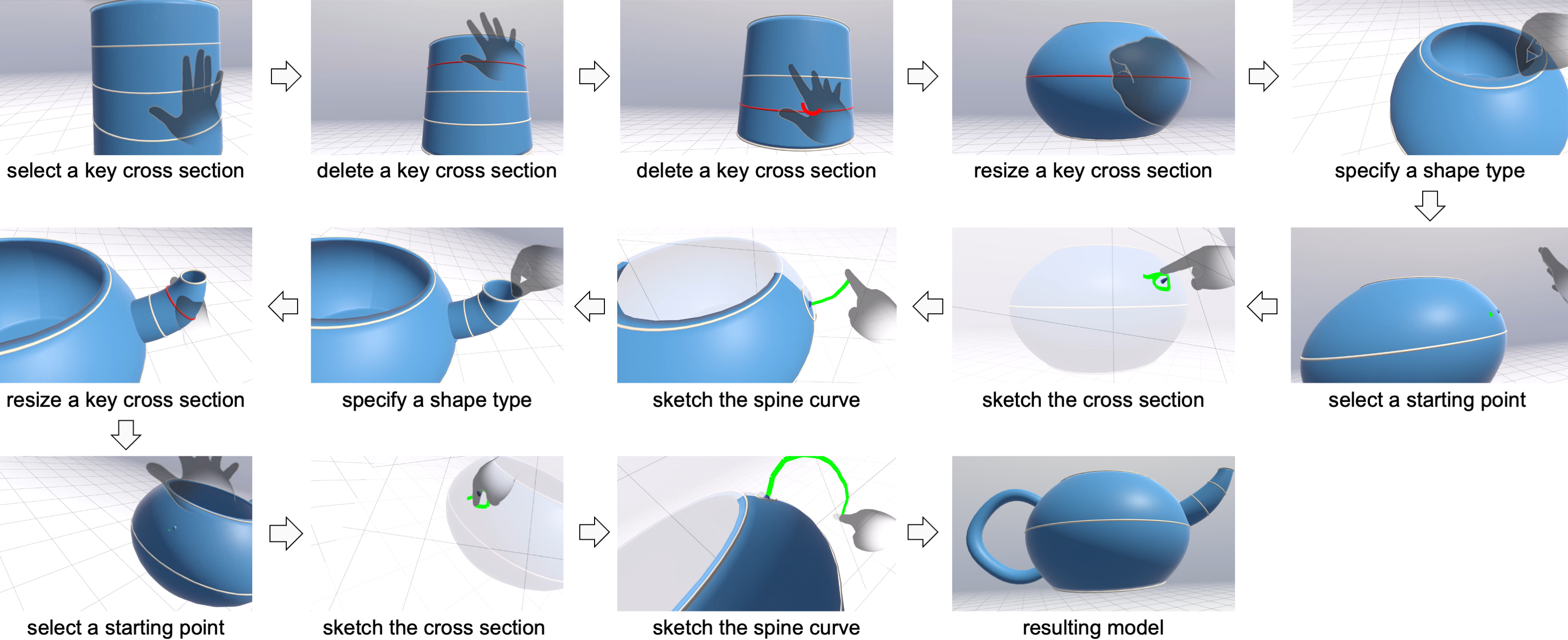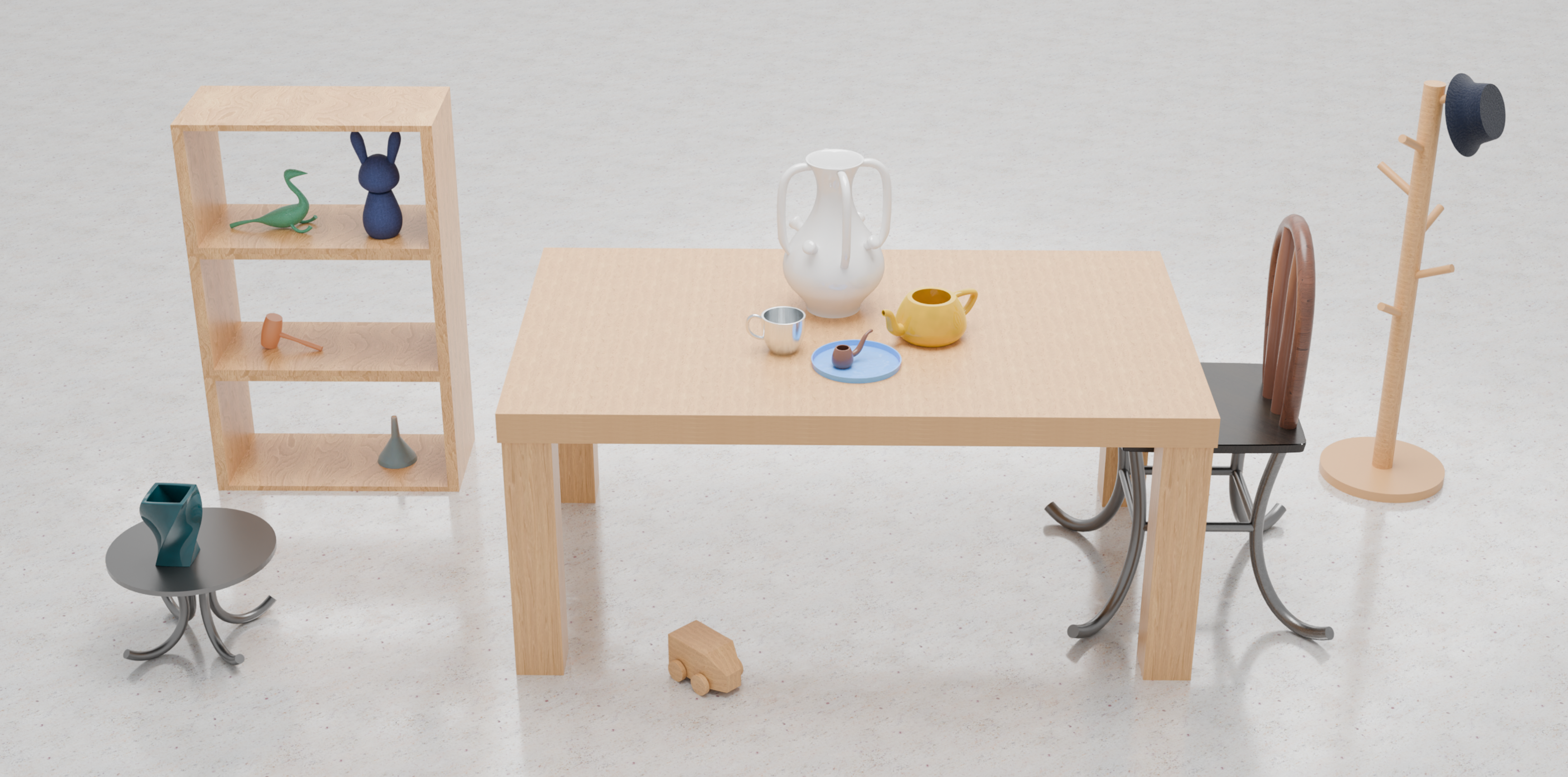Easy Modeling of Man-Made Shapes in Virtual RealityPacific Graphics 2025, Conference Track |

Figure 1: We present a VR tool that enables general users to interactively model man-made shapes for personalized fabrication. Our tool models each shape part (i.e., body, handle, and spout of the teapot) as a generalized cylinder and iteratively assembles them to form the target shape. The 3D printed teapot is usable since each part is modeled with a correct shape type, e.g., shell-like shape for the spout.
Abstract
Virtual Reality (VR) offers a promising platform for modeling man-made shapes by enabling immersive, hands-on interaction with these 3D shapes. Existing VR tools require either a complex user interface or a post-processing to model fabricable man-made shapes. In this paper, we present a VR tool that enables general users to interactively model man-made shapes for personalized fabrication, simply by using four common hand gestures as the interaction input. This is achieved by proposing an approach that models complex man-made shapes using a small set of geometric operations, and then designing a user interface that intuitively maps four common hand gestures to these operations. In our shape modeling approach, each shape part is modeled as a generalized cylinder with a specific shape type and iteratively assembled in a structure-aware manner to form a fabricable and usable man-made shape. In our user interface, each hand gesture is associated with a specific kind of interaction tasks and is intelligently utilized for performing the small set of operations to create, edit, and assemble generalized cylinders. A user study was conducted to demonstrate that our VR tool allows general users to effectively and creatively model a variety of man-made shapes, some of which have been 3D printed to validate their fabricability and usability.
Download
Paper PDF (~37.2M)Video
Results

Figure 2: A running example of using our VR tool to interactively create a teapot model with three shape parts (i.e., body, spout, and handle), each of which is modeled as a generalized cylinder and assembled sequentially.

Figure 3:
Our VR tool allows modeling a variety of man-made shapes that can be used for different purposes in our daily life, each of which was modeled within a few minutes using our tool.

Figure 4: Our VR tool allows modeling man-made shapes with the same functionality but different forms: (top) vase and (bottom) teapot models of different forms.

Figure 5: A gallery of man-made shapes modeled by using our VR tool and fabricated with 3D printing. From left to right: vase, kettle, funnel, smoking pipe, and toy car. Note that the toy car is an assembly of three parts, each of which is modeled using our tool.
Acknowledgments
We thank the reviewers for their valuable comments and the users for their participation in our user study. This work was supported by the Singapore MOE AcRF Tier 2 Grants (MOE-T2EP20222-0008, MOE-T2EP20123-0016).
Bibtex
@inproceedings {Tang-2025-VRShapeModeling,author = {Haoyu Tang and Fancheng Gao and Kenny Tsu Wei Choo and Bernd Bickel and Peng Song},
title = {Easy Modeling of Man-Made Shapes in Virtual Reality},
booktitle = {Proceedings of Pacific Graphics},
year = {2025}}